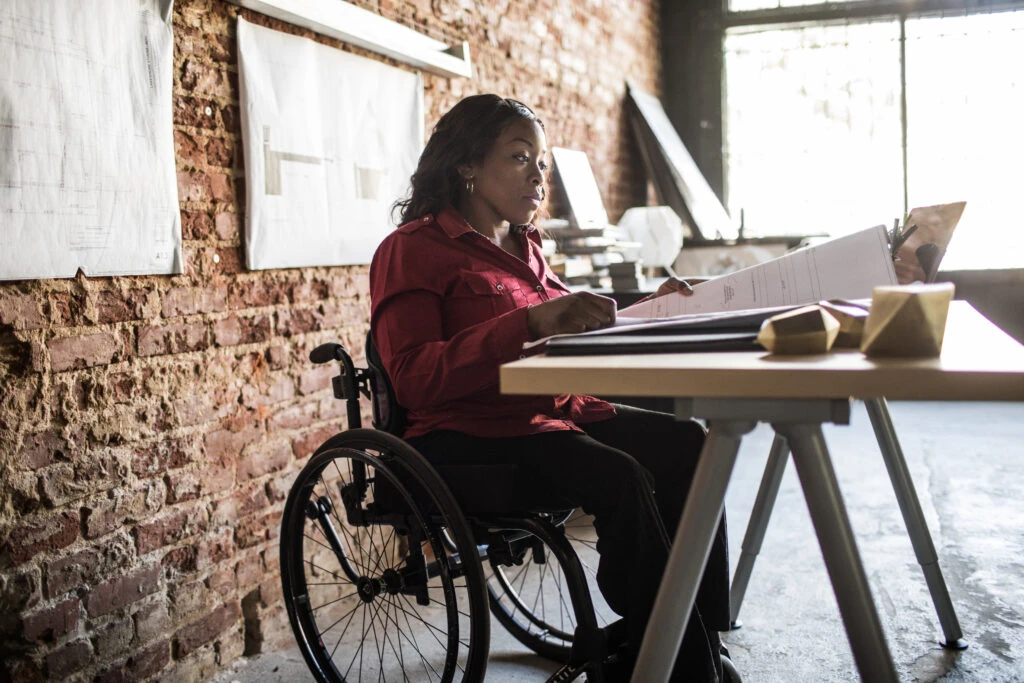
Fulfilling our commitment to accessibility and inclusion
The pandemic has made clear how inaccessible many of our institutions and government services can be. This isn’t news. These challenges existed long before the pandemic and many people, including disability advocates, have been asking for improvements for years. But the challenges of the pandemic have helped make this more obvious to leaders and amplified the need, from education¹ to government². That awareness also comes at a time when public sector digital transformation is gaining momentum.
In December, I wrote that we can’t miss this moment to build infrastructure that works for everyone. That extends to government services and operations. We must build accessibility into plans for digital transformation. That means changes to technology, to policy, and to the way we work.
That’s why I gathered public sector leaders with expertise in accessibility for a Digital Forum. We discussed what to do—and just as importantly, how to do it—with experts who have done this in New York City, Chicago, and Los Angeles:
- Victor Calise, Commissioner of the Mayor’s Office of People with Disabilities, City of New York
- Rachel Arfa, Commissioner at the City of Chicago Mayor’s Office of People with Disabilities
- Stephen David Simon, Executive Director at the City of Los Angeles Department on Disability
Our discussion explored what I believe are six mutually supportive elements that lead to an accessible digital transformation.
- Digital services must be built with design and technology choices that make those services usable by all. This is a baseline that must become the norm when governments build digital services. That includes making web pages screen-reader accessible, including audio descriptions on videos, subtitles and captions, accessible color choices, and more.
- Governments must implement policies that promote accessibility. It is not enough to mandate accessibility in websites and applications, a step many governments have already taken. They must also implement policies and processes that give technology teams the time and operational space to do the work right. It can’t be about checking a box that meets the bare minimum.
- Governments must continue their push to close the digital divide. Governments around the world have recognized the importance of connectivity and devices. They must also build technologies that work well regardless of bandwidth and device speed. It doesn’t matter if an application is well-designed if the people who need that service can’t access it.
- Governments are building more accessible services and ensuring that residents can access them. But they should also be investing in training and educating their workforces on how to prioritize accessibility in their work among technical and non-technical employees.
- Accessible digital transformation also requires outreach to communicate with people about new services and opportunities. In short, people need to know the services exist and that they are going to be able to access them. This is particularly important among the same populations who have been excluded from accessing digital government services.
- Efforts must receive the resources and funding necessary to make it a reality. This work takes expertise, time, and money. Governments need to provide all of those to implement effective, accessible digital transformation. The policies, mandates, and even genuine dedication to accessibility must be backed up by the budget needed to put it into practice.
Prioritizing accessibility requires taking a broad approach to digital transformation that doesn’t reduce it to only technical changes. When we work with our partners and customers on digital transformation efforts, we know success is based on more than just the technology. It requires clear vision, collaboration, buy-in at all levels, and a modern approach to IT. When we bring that together, digital transformation doesn’t just change the technology, it changes the way we work for the better.
As essential as each element outlined above is to increase accessibility, organizations can still find it challenging to implement them all. Join me for an enlightening discussion with public servants on the front lines of this issue.
Register for the Digital Forum to join in this vital and timely discussion. Learn more about our Microsoft Accessibility Initiatives.
Sources:
¹Digital Accessibility: A Pandemic Look Back—And Forward—UW-Madison Information Technology
²Creating an inclusive digital world—Scottish Government




